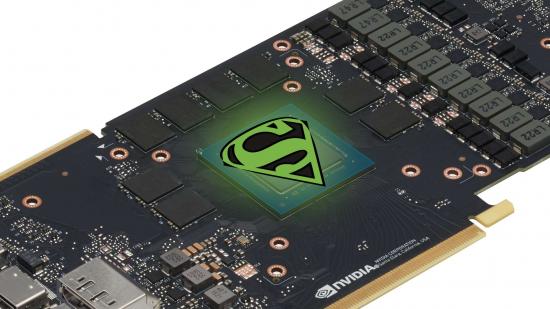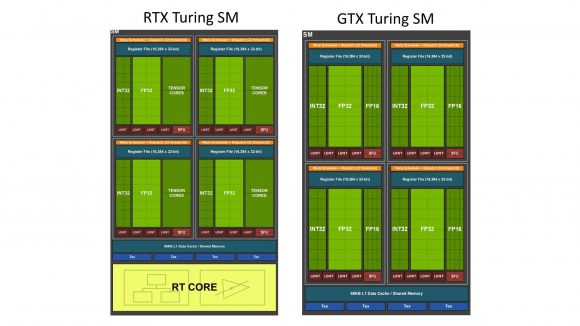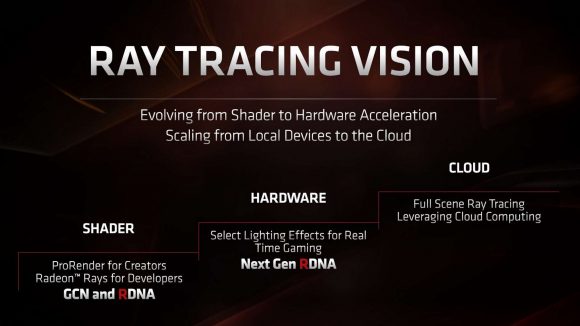Nvidia’s RTX Super Turing cards will come with a new level of ray tracing power at every price point because they’re all going to launch with more RT and Tensor cores. That’s something which hasn’t really been spoken about in the reactions to the leaks around the upcoming Nvidia refresh; the apparent response to AMD’s Navi-based Radeon RX 5700 XT and RX 5700 graphics cards.
The green team will reportedly be changing not just the memory capacity – and in some cases the memory speed – of the refreshed RTX Super cards, but it will also kit out the new pixel pushers with different GPU configurations too. That may take the form of either giving a card a more complete version of its existing chip, or in some cases they will apparently be nabbing the GPU from the tier above and cutting it down to fit.
Either way, when you chop and change the Turing graphics chip, you’re not just going to be getting more CUDA cores, and therefore a bit of a boost to the traditional rasterised rendering performance, you’re also getting more of that dedicated hybrid real-time ray tracing silicon sauce too. It’s baked directly into the Turing SM design, after all.
Igor Wallossek, from the good Tom’s Hardware (sass) has reported on the different variants of the new RTX Super cards, detailing the different core counts and GPUs of the new range of Turing cards. There’s some conflicting commentary between this and the original WCCFTech leak, mostly around the RTX 2080 Super card.
Solid state: These are the best SSDs for gaming right now
Igor’s suggesting that the RTX 2080 Super will simply use the full-fat TU104 GPU, which will therefore give it the complete 48 SM package with 3,072 CUDA cores inside it. The previous rumour had claimed that card would get a modified version of the TU102 GPU the RTX 2080 Ti is currently sporting, and would also get 11GB GDDR6 memory into the bargain.
Though both sources are agreeing that the memory is going to be boosted to 16Gbps for the top-tier RTX 2080 Super card. This is Igor’s current speculation with my own extrapolated RT and Tensor Core counts:
| RTX 2080 Super | RTX 2080 | RTX 2070 Super | RTX 2070 | RTX 2060 Super | RTX 2060 | |
| GPU | TU104 | TU104 | TU104 | TU106 | TU106 | TU106 |
| CUDA cores | 3,072 | 2,944 | 2,560 | 2,304 | 2,176 | 1,920 |
| Memory | 8GB GDDR6 | 8GB GDDR6 | 8GB GDDR6 | 8GB GDDR6 | 8GB GDDR6 | 6GB GDDR6 |
| Memory speed | 16Gbps | 14Gbps | 14Gbps | 14Gbps | 14Gbps | 14Gbps |
| RT cores | 48 | 46 | 40 | 36 | 34 | 30 |
| Tensor cores | 384 | 368 | 320 | 288 | 272 | 240 |
However the final specs actually shake out the new RTX Super cards are going to find themselves with a greater level of ray tracing performance. Considering that we’re starting to see a bit of a groundswell of RTX compatible titles coming out of this year’s E3, with Watch Dogs: Legion and Cyberpunk 2077 not being the least of them, that’s surely going to be a welcome thing.
And that’s because ray tracing, via the Microsoft DirectX Raytracing (DXR) API, is mighty demanding on even the most powerful graphical hardware from Nvidia right now.
For its part AMD isn’t going to be able to get in on this DXR love-in with the upcoming Navi GPUs… yet. It has confirmed next year, with the RDNA 2 architecture likely arriving with the big Navi 20 GPU, its cards will be capable of ‘select lighting effects’ for real-time ray tracing. That should mean hardware-based support for any DXR-based title, and therefore a shiny new seat at the ray traced gaming table for team Radeon.
Join the conversation about the RTX Super Turing cards on this story’s Facebook and Twitter threads.


